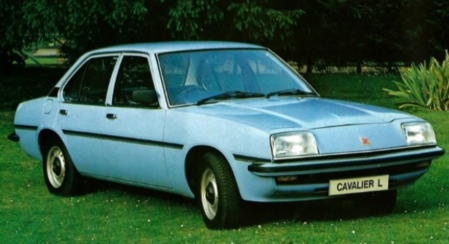Cavalier Mk1
Vauxhall Cavalier Mk1: A Bold Leap into the Mid-Range Market
In the early 1970s, Vauxhall sought to evolve beyond the Viva HC by introducing a more upmarket and spacious contender aimed squarely at the competitive mid-range segment, particularly to rival the Ford Cortina. Their goal: to secure a larger slice of the expanding company car market.
The new model, christened "Cavalier," was scheduled for release in autumn 1975. It was designed to complement the smaller Chevette, which entered production earlier that same year. From the outset, a distinctive "droop snoot" front was a hallmark of the HD/Cerian prototypes, crafted with style and flair. However, due to falling sales, the project was paused in late 1973.
With the company under pressure, Bob Price stepped in as Managing Director in January 1974. Swift decisions followed by February, Vauxhall’s HD/Cerian concepts were merged with Opel’s advancing U-Car project, set to replace the Ascona and Manta. This bold move saved £50 million and two years of development. Luton’s team pivoted to applying Vauxhall’s design identity onto Opel’s U-Car base.
Six mock-ups were created for the saloon and one for the coupé, varying in front and rear treatments. Ultimately, to keep things economical and on schedule, only modest changes were made—chiefly the signature droop snoot nose. The Manta, in turn, adopted Vauxhall’s front end with shared headlamps and air slots. The name "Cavalier," originally considered for the HD model, was retained for this iteration.
Though hatchbacks, estates, and even a pick-up were explored via styling bucks, none made it to production. Manufacturing was initially slated for GM’s Antwerp plant, alongside Opel variants.
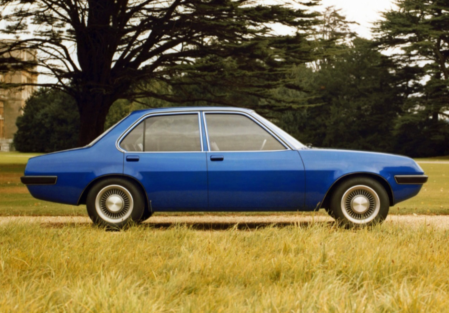
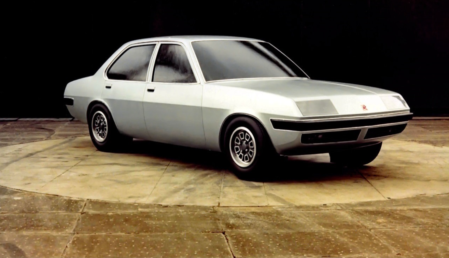
A Cinematic Launch & Continental Start
The Cavalier’s dealer debut took place on 29 September 1975 at Studio 6, Elstree Film Studios, complete with an ice rink and a celebrity-filled spectacle. Patrick Macnee (John Steed in The Avengers) took part, filming two adverts for Vauxhall. Adding a dose of irreverence, the full Monty Python cast turned up to promote Monty Python and the Holy Grail—Eric Idle even sang a parody about the common market.
Post-launch, cars were stashed in Elstree's underground parking before being quietly moved to Earls Court for their official unveiling.
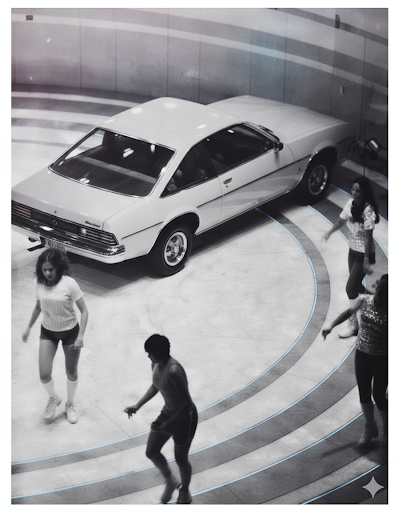
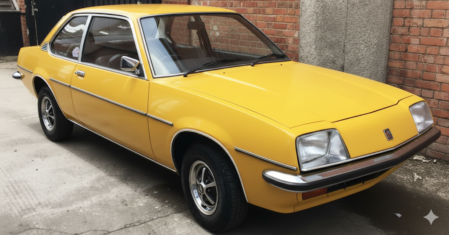
From Concept to Production
Launched as a 1976 model in November 1975, the Cavalier featured a 1,896cc engine and was a subtly reworked Opel Ascona B. It rode on GM’s stretched U-Car platform—sharing lineage with the Kadett C and Chevette. Originally intended to receive unique Vauxhall bodywork, those plans were scrapped mere months before launch, with GM opting to adopt the Ascona’s design almost wholesale.
Still, Wayne Cherry’s aerodynamic droop snoot remained, minus the Manta’s air vents. At the rear, the number plate moved below the bumper, flanked by a bold “VAUXHALL” appliqué. Inside, changes were minimal—limited to badging and trim variations.
The UK Lineup & Assembly Milestones
Initially, the UK market saw the 1600L in both 2- and 4-door saloon variants, a 1600GL 4-door, and the 1900GL coupé with a deep spoiler—unique to the UK, as it was reserved for the Manta GT/E in Europe. All were imported from Belgium, unlike Opel’s German-built Ascona and Manta.
The Cavalier gained praise for its extensive under-body protection, matching Vauxhall’s Chevette and Viva.
A major milestone arrived on 26 August 1977: production began at Vauxhall’s Luton facility. The first UK-built car, a 1300 model powered by the 1256cc Viva/Chevette engine, was ceremoniously driven off the line by Manufacturing Director Eric Fountain. Soon after, Luton added the 1600 and 1900 variants to its output. Only the Sportshatch remained exclusive to Antwerp.
With production in full swing, exports resumed from Luton to various European markets.
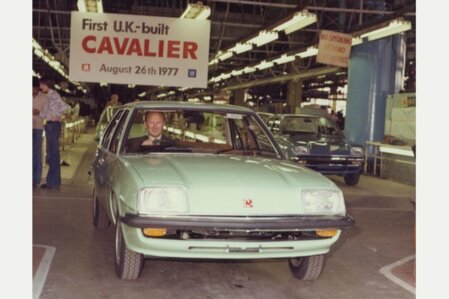
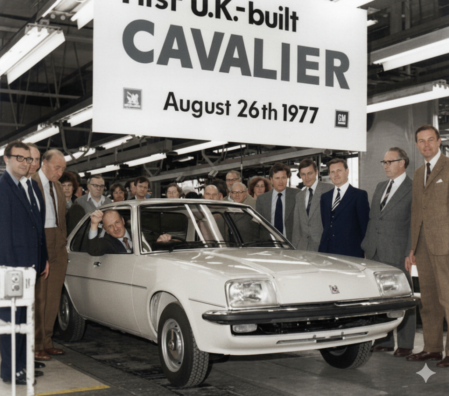
Growing Presence Despite a Crowded Market
After its October 1975 debut, the Cavalier gained traction—reaching 13th in 1976 with nearly 30,000 units sold. By 1977, it climbed to eighth with 41,000 sales, then peaked at seventh in 1978, exceeding 55,000 units. Even amid a 1980 recession, it held seventh place with 41,000 sales.
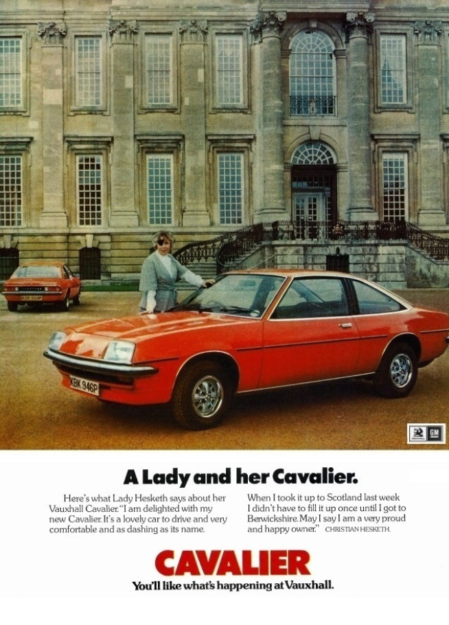
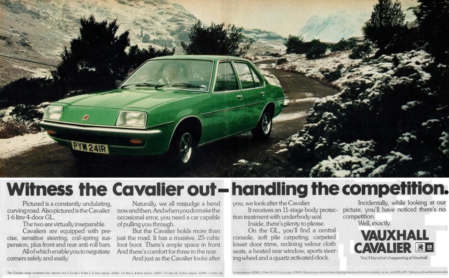
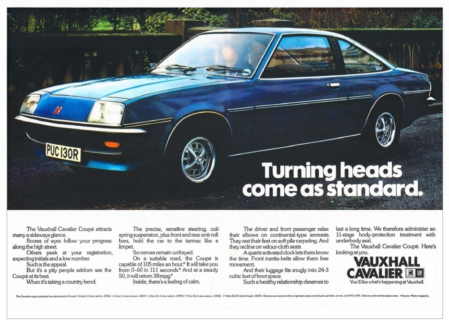
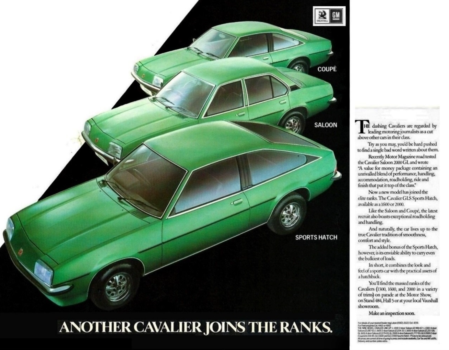
Rare Variants & Concepts
Between 1978–79, Vauxhall offered a convertible version of the coupé: the Centaur. Developed by Magraw Engineering and sold via Crayford through Vauxhall dealerships, only 118 were produced. It retained a T-bar and reinforced floor for rigidity and was based on the 2-litre GLS coupé. Fewer than 30 survived by 2007.
Wayne Cherry’s Silver Aero concept, based on the Sportshatch and unveiled at the 1980 NEC Motor Show, showcased a 2.4-litre turbocharged engine producing 150bhp. Though orders were taken, production never materialised, and it remained a unique prototype.
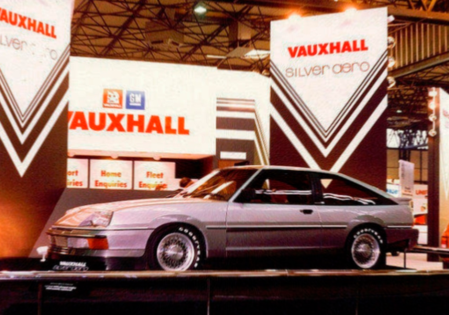
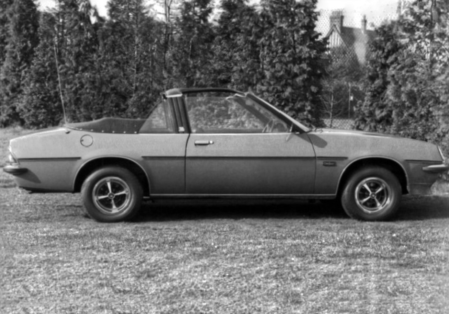
A Solid Legacy
While the Cavalier never matched the sales heights of the Ford Cortina or even the much-maligned Morris Marina, it marked a turning point for Vauxhall, restoring reputation and confidence lost in the early ’70s. Nearly 250,000 MK1s were sold.
Despite strong early sales, by 2009, only 373 were still registered in the UK, having become rare by the mid-1990s. As enthusiasts often quip: “You’re more likely to see a Lamborghini than a Cavalier Mk1 on the roads today.”
Trim Levels:
- L
- LS
- GL
- GLS
Special Editions:
- Command Performance
- Silver Special
